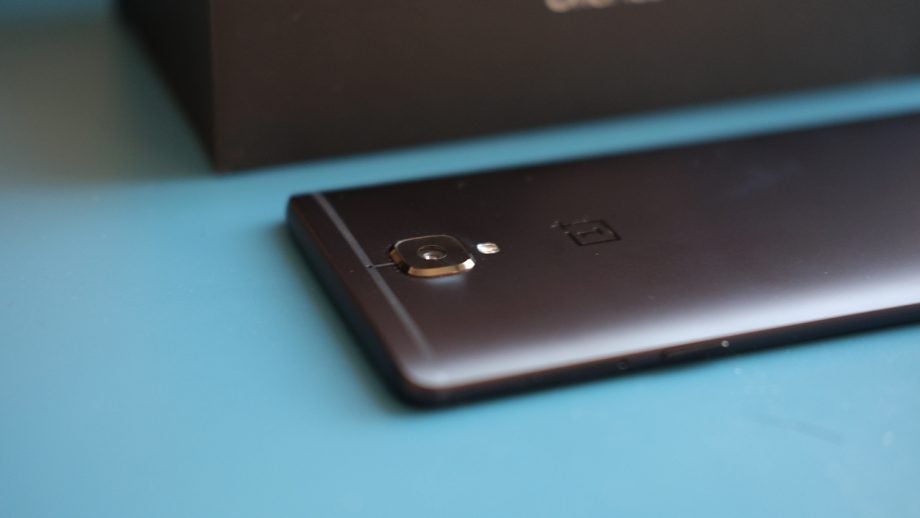OnePlus 3T Review - Software and performance Review
Software and performance
Still the best bang for your buck Android phone

Sections
- Page 1 OnePlus 3T Review
- Page 2 Software and performance Review
- Page 3 Camera, battery life & verdict Review
- Page 4 Battery life and verdict Review
OnePlus 3T – Software
The OnePlus 3T runs Android 6.0.1 Marshmallow overlaid with OnePlus’ OxygenOS skin. OnePlus has promised an Android 7.0 Nougat update should be available before the year is out, but just wasn’t ready for launch.
Thankfully, as skins go, OxygenOS is one of the better and more reserved ones and most of the additions are actually very useful. The look and feel of Android is largely the same, and most of the OxygenOS customisations augment what’s already available through gestures or additional inputs. You can draw a circle on screen to open the camera app and swipe with three fingers to take a screenshot, for example.

You can also customise how the Home screen looks and performs. If you want, swiping up anywhere on the Home screen can open search, or swiping down from anywhere opens the notification panel so you don’t have to drag from the top. You can leave the icons exactly like stock Android or you can choose different designs, shapes or sizes. OxygenOS lets you change things only if you want, otherwise it all feels like stock Android.
OnePlus’ ‘Shelf’ makes a return, which is accessible by swiping right on the Home screen. This houses your recent contacts, recent apps and a management centre that shows your storage and battery levels, as well as how much data you have left if you’re on a limited tariff. Again, if you don’t want to use Shelf, you can just turn it off.
OnePlus 3T – Performance
The 3T is powered by a quad-core 2.35GHz Qualcomm Snapdragon 821: that’s the same chip seen in the Google Pixel and Google Pixel XL. Paired with 6GB of DDR4 RAM it’s unsurprising that the OnePlus 3T feels incredibly snappy. But like the Pixel phones, the benchmarking scores don’t really tell the full story. In Geekbench 4’s single core test it managed a score of 1,853, a fraction above the Pixel XL, and in the multi-core test it managed 4,256, again just over the Pixel XL. As a frame of reference, the original OnePlus 3’s Snapdragon 820 managed 1,700 and 4,019 in the Geekbench 4 tests.
While it beats the Pixel XL, and it manages to just beat the Samsung Galaxy S7’s 1,848 single core score, it falls considerably short of the S7’s 5,841 multi-core result. It also easily beats the more expensive Moto Z in the Antutu benchmark, where it scored 163,181. The Moto Z scored 130,550 by comparison and the OnePlus 3 138,857. Similarly, its 3DMark Slingshot score of 2,646 also wiped the floor with the Moto Z’s 2,121.
The OnePlus 3T is definitely not short of performance.

Really, though, benchmark scores are beginning to lose their importance. The main thing is that the OnePlus 3T feels super responsive in day-to-day use, although it did feel like the Pixel phones had it beat in terms of touch responsiveness – again showing the shortcomings of pure benchmark numbers.
OnePlus has said it’s introduced an upgrade file system algorithm to help with app launch speed and it did feel like large games loaded that much quicker. Asphalt 8 loads up almost instantly and there’s no dropped frames while in-game. The OnePlus 3T isn’t going to leave you waiting impatiently at every turn.
As for call performance, I never encountered any problems with call quality. The microphone picked up my voice perfectly well, while I could hear callers without any issues. Using the OnePlus 3T as a loudspeaker, it delivers a surprising amount of volume, which was similarly the case with the original OnePlus 3. It’s not going to deliver particularly impressive sound quality, but if you’re just after sheer volume it does surprisingly well especially if you want to casually watch something on YouTube.
How we test phones
We test every mobile phone we review thoroughly. We use industry standard tests to compare features properly and we use the phone as our main device over the review period. We’ll always tell you what we find and we never, ever, accept money to review a product.


